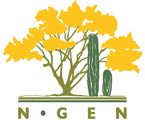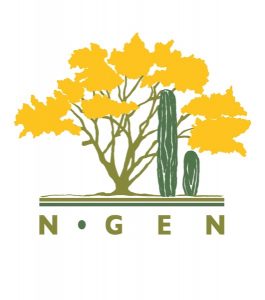Adrian Munguia-Vega, Ph.D.
PANGAS Science Coordination. Comunidad y Biodiversidad A.C. Guaymas, Sonora, Mexico.
e-mail: airdrian@email.arizona.edu
Summary
Many environmental issues from mega-developments, water use and mining to fisheries and new protected areas often have one-sided opinions that only encourage radicalization of discussions and left the general public wandering and wondering where the truth is. A boundary organization is a network of individuals/organizations that work across the traditional boundaries between government, scientists, NGOs and communities to build trust and increase understanding of each other’s needs, capacities and limitations, facilitating discussions and research of emerging issues while providing the best available scientific information to provide neutral, peer-reviewed and balanced expert opinions that go beyond any single sector or organization. The goal is to survey the current regional landscape and discuss the potential role for a boundary organization network with some sort of the following profile: creates bridges between science and policy, represents different sectors and facilitates interactions among them, recognized by local governments, non-political, transparent, credible, stable in the long-term beyond changes in people and administrations, produces timely information, promotes trans-disciplinary research and the efficient use of resources, is self-sufficient financially taking advantage of multiple funding sources, increases capacity building among sectors including new generations of boundary actors, etc. The discussion will jump-start with some examples of boundary organizations and their mission, organization, governance, financials and branding.
Ideas of tangible products:
-List of individuals and organizations interested in establishing the new network
-Peer-reviewed paper documenting the process and anticipated risks and challenges of developing a new boundary organization network in the Sonoran Desert region and describing the vision and realistic profile of such network.
-A new boundary organization network for the region (eventually)
What session participants need to develop:
Try thinking ahead some of the next questions
-Do you know organizations that do boundary work in the Sonoran Desert?
-How do you establish such an organization from scratch?
-How do you create the political will to establish a boundary organization recognized by local governments?
-Will a boundary organization network need to work cross-states, US-Mexico borders?
-How do you finance such an organization?
-How do you establish firewalls between funding sources and credibility?
-How do you deal with transparency vs. confidentiality issues?
-Would you establish a single boundary organization for the region or many according to multiple issues (mining, water, marine issues, etc.)
-What other challenges do you anticipate?
Are you interested in joining this session? Send an e-mail to say hi and let’s start networking !
Additional materials:
Blogs
http://oceanspaces.org/blog/what-‘boundary-organization’-and-why-should-you-care-part-1
http://compassblogs.org/blog/2014/06/10/navigating-the-boundary/
Examples
California Ocean Science Trust: http://www.oceansciencetrust.org/
California Council on Science and Technology: http://ccst.us/
The Climate Impacts Research Consortium of NOAA’S Regional Integrated Sciences and Assessments: http://cpo.noaa.gov/ClimatePrograms/ClimateandSocietalInteractions/RISAProgram/AboutRISA.aspx
Center for Ocean Solutions: http://www.centerforoceansolutions.org/
Want more? Check out these papers
CLARK, W. C., TOMICH, T. P., VAN NOORDWIJK, M., GUSTON, D., CATACUTAN, D., DICKSON, N. M. & MCNIE, E. 2011. Boundary work for sustainable development: Natural resource management at the Consultative Group on International Agricultural Research (CGIAR). Proceedings of the National Academy of Sciences, August 15, Published on-line. Available:
http://www.pnas.org/content/early/2011/08/11/0900231108.abstract
PARKER, J. N. & CRONA, B. I. 2012. All Things to All People: Boundary Organizations and the Contemporary Research University. Social Studies of Science, 42, 262-289. Available:
http://www.stockholmresilience.org/download/18.2a759bb41277b00e3c380001363/1381790382011/ALLTHINGSParker_Crona_in+review.pdf


